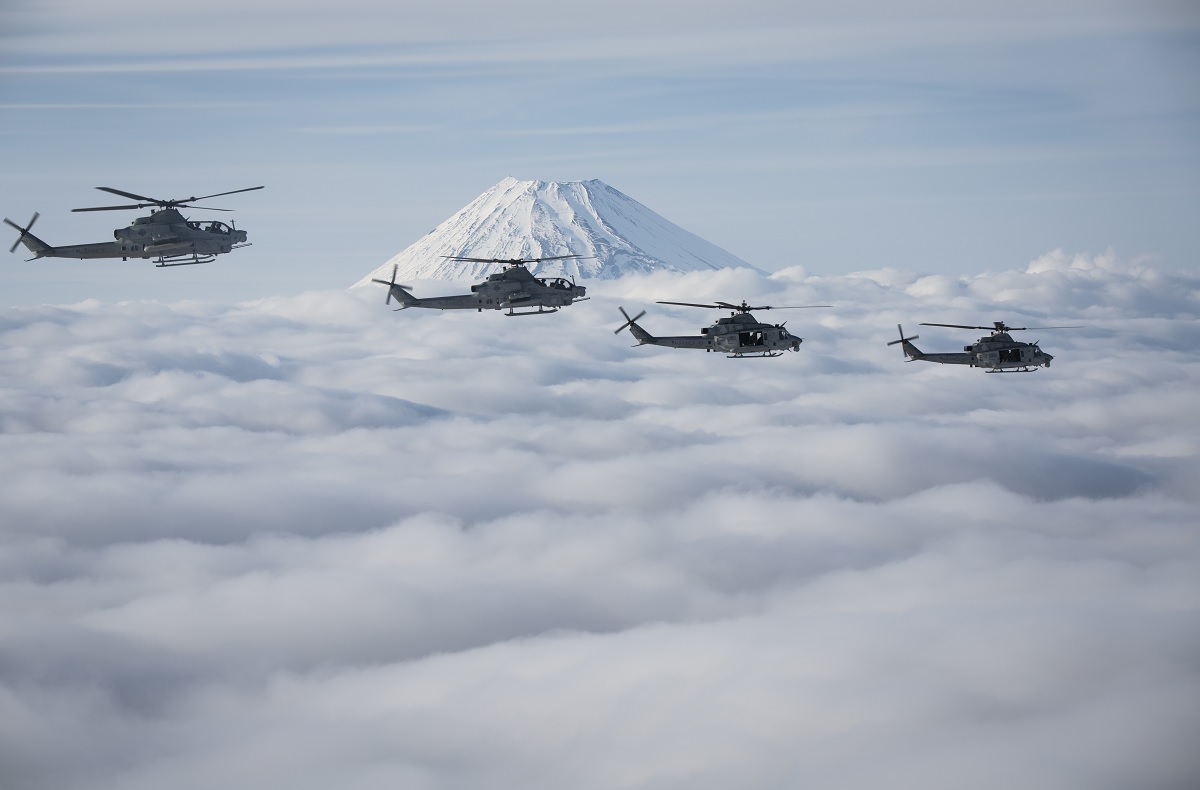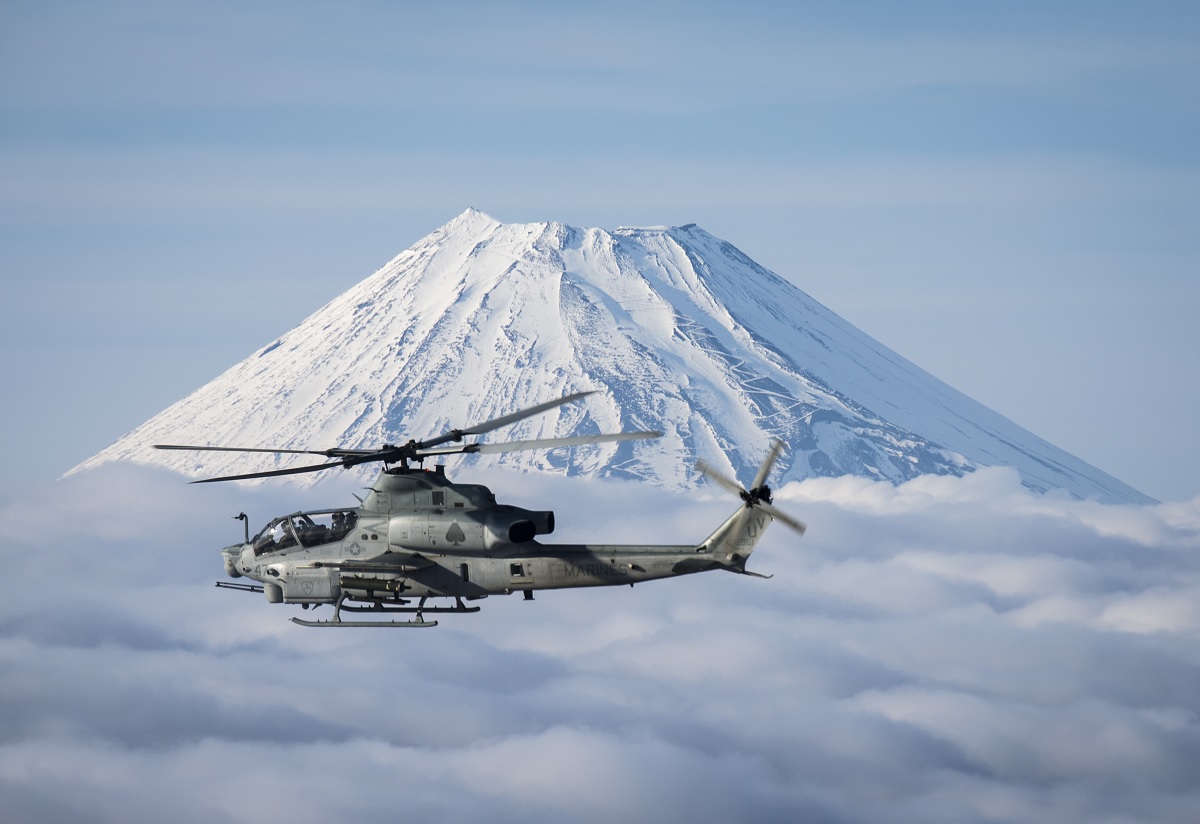The helicopters showed a 25% improvement in range as a result of the fuel tanks, which are installed underneath both sides of the chopper bays and look like torpedoes
Marine Light Attack Helicopter Squadron (HMLA) 267 conducted a mission that brought them to various locations in Japan from March 10 to 14, 2017 on flights based out of Okinawa in order to test the efficiency of the new auxiliary fuel tank for the unit’s AH-1Z Viper and UH-1Y Venom helicopters.
For his story titled Marine helicopters soar farther than before with auxiliary fuel tanks, Cpl. Andy Martinez, III Marine Expeditionary Force (MEF), interviewed Capt. Christopher Millar, a UH-1Y Venom pilot of HMLA-267, a squadron deployed to Okinawa from Camp Pendleton, California.
“This allows us to support the Marines of III MEF as we project our power further and increase our capability with the fuel tanks,” said Millar, who is supporting Marine Air Group 36, 1st Marine Aircraft Wing, III MEF, through the unit deployment program.
On March 10, Millar piloted one of the helicopters that broke the record, traveling 314 nautical miles from New Tanegashima Airport in Japan to Marine Corps Air Station Futenma, Okinawa.

The commanding officer of HMLA-267, Lt. Col. Jon Livingston, acknowledged that this was Venom’s longest-ever operational flight. The squadron also visited Osaka, Camp Fuji, and Marine Corps Air Station (MCAS) Iwakuni in Japan over the course of the four-day trip.
“The auxiliary fuel capability gives the Marine Air-Ground Task Force commander the ability to respond to crises and deploy our forces from the most northern reaches to southern reaches of the area of operations,” pointed out Millar.
It should be noted that once their fuel tanks have been removed, the H-1 helicopters can quickly be reconfigured for ordnance missions once they have reached their locations.

The torpedo-like fuel tanks are attached below both sides of the helicopter bays.
“The auxiliary fuel systems provide the MAGTF commander scalable options to be able to move his assets around the area of operations without relying on the strategic lift,” explained Millar.
The extended range of the H-1 helicopters aids U.S. Marine Corps (USMC) operations in crisis response, maintaining a deterrent, establishing a forward presence, conducting combat operations, and dispersing aid to the needy.

“With these auxiliary fuel tanks, I believe it gives H-1’s a greater ability to self-deploy and to help the Marines on the ground,” Millar said.
HMLA-267 provides offensive air support, utility support, armed escort, and airborne support arms coordination to the Marine Air-Ground Task Force (MAGTF) Commander day or night, in any weather, during expeditionary, joint, or combined operations. Detachments to Marine Expeditionary Units (MEUs) and Marine Amphibious Units (MAUs) are included in this (MEUs).

Photo by Lance Cpl. Andy Martinez / U.S. Marine Corps

